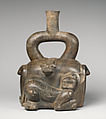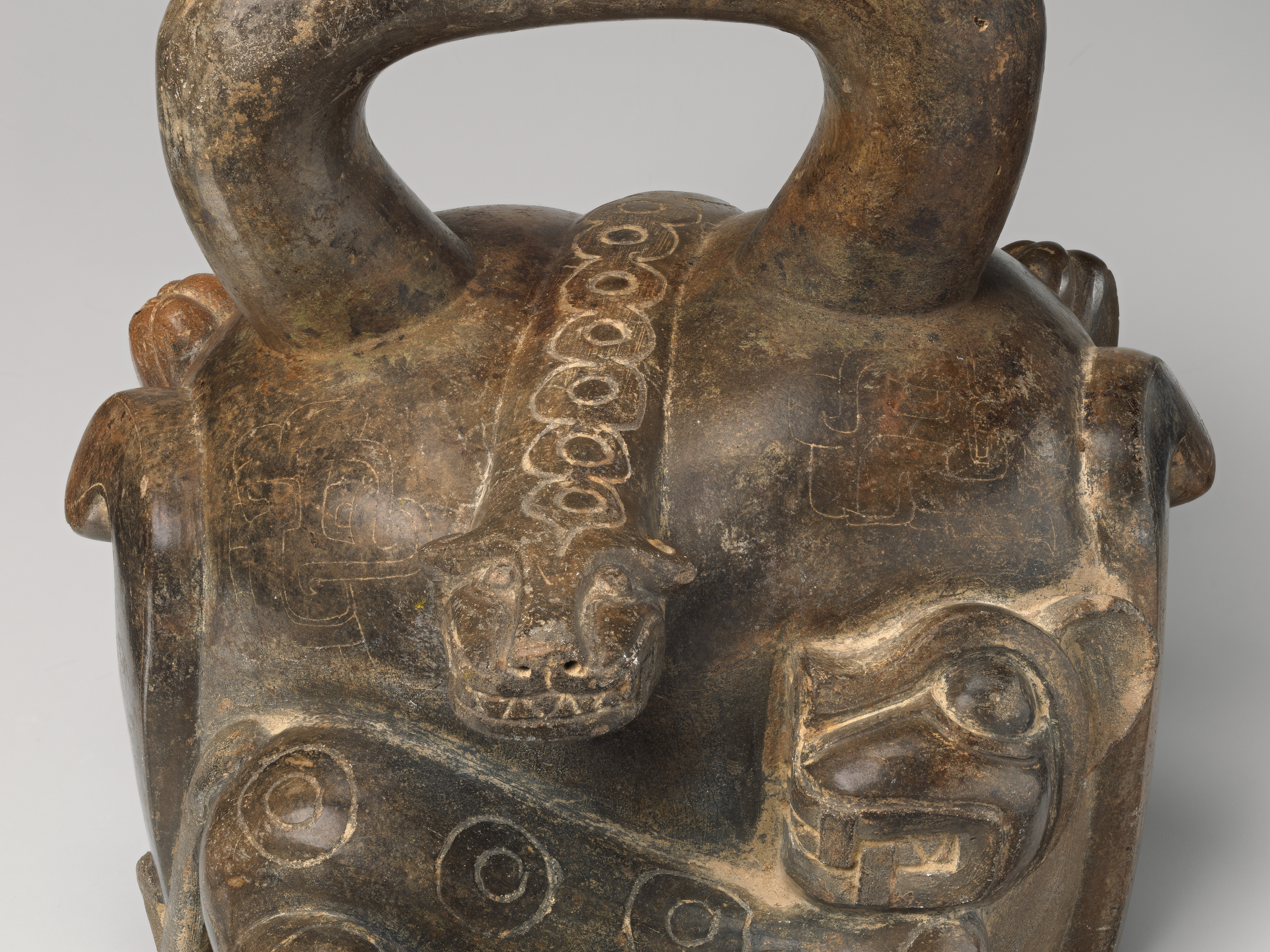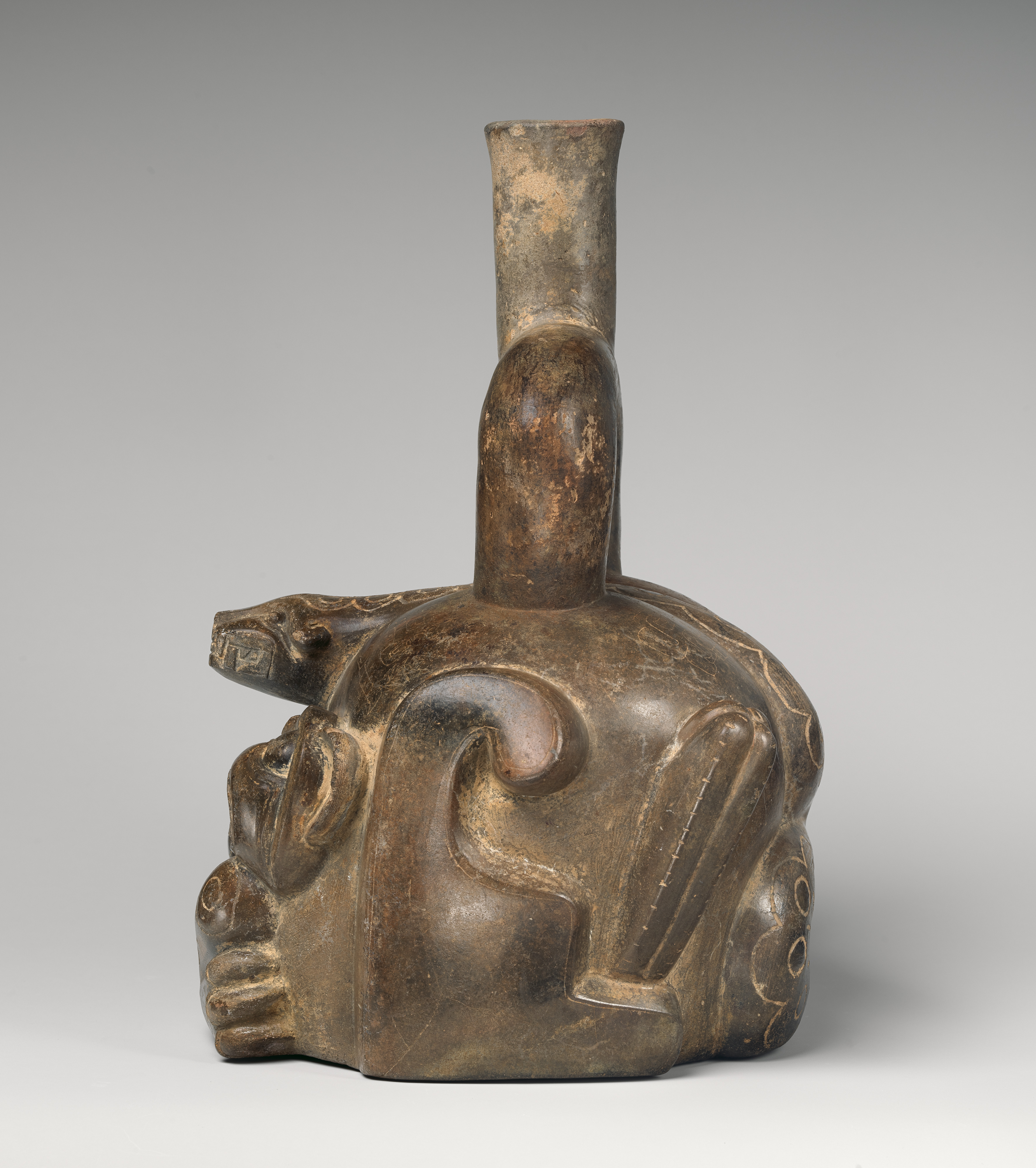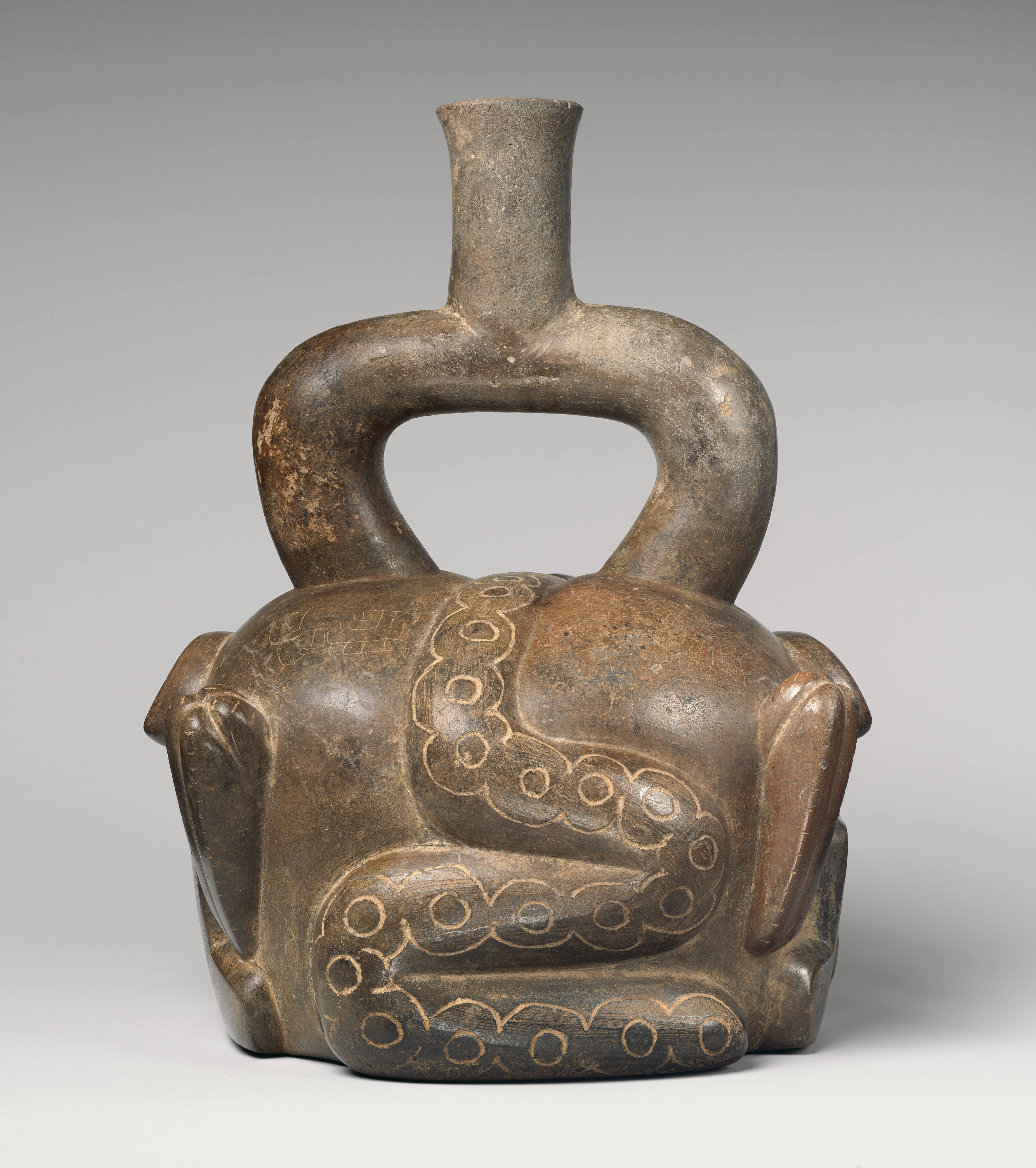Stirrup-spout bottle with feline and snake
Jaguars were a favorite subject in the art of ancient Peru, and their strength and ferociousness made them an apt symbol of power. This ceramic bottle, made by artists of the Cupisnique culture (12th–5th centuries B.C.), is a marvelous example of a rather lifelike image of a recumbent jaguar, identifiable by the circular spots on its body. The jaguar’s mouth is open, displaying its impressive canines—features that must have struck fear in any observer. The cat looks backwards, gazing upon a large anaconda slithering across the top of the vessel and extending down the back. Four zoomorphic heads, shown in profile, were lightly incised on the shoulder of the vessel.
The juxtaposition of these two powerful creatures—the jaguar and the anaconda—suggests a potential struggle between two animals that certainly ruled their respective domains. Jaguars and anacondas are primarily found in the Peruvian jungle, a habitat relatively distant from the coastal communities where this vessel was made. Two San Pedro cacti were modeled on either side of the vessel, near a stepped motif surmounted by a curled element. The San Pedro plant has hallucinogenic properties; ritual participants who ingested the substance may have perceived themselves transforming into one of several powerful animals such as a jaguar, anaconda, or harpy eagle.
Cupisnique artists excelled in various media, including ceramics, stone, and gold. Jaguars, pumas, caimans, anacondas, and eagles were commonly represented, as were spiders, rodents, vegetal forms and, occasionally, humans and supernatural figures. The nature and extent of Cupisnique settlements and their relationships to coeval and later cultures such as Chavín and Moche, are the subject of ongoing archaeological investigations.
This vessel is an early example of a stirrup-spout vessel—the shape of the spout recalls the stirrup on a horse's saddle—a much-favored form on Peru's North Coast for about 2,500 years. Although the importance and symbolism of this distinctive shape is still puzzling to scholars, the double-branch/single-spout configuration may have prevented evaporation of liquids, and/or may have provided a convenient handle. The Cupisnique, Chavín and the Moche sculpted stirrup-spout bottles into a wide range of forms, including human figures, animals, and plants worked with a great deal of naturalism. Subsequent cultures in Northern Peru, including the Chimú (A.D. 1000–1470), continued the use of this form of vessel spout, although the bottles were simpler and the subject matter reduced.
References and Further Reading
Alva Meneses, Ignacio. Ventarrón y Collud: Origen y auge de la civilización en la costa norte del Perú. Chiclayo: Ministerio de Cultura del Perú, Lambayeque, 2012.
Burger, Richard L. Chavin and the Origins of Andean Civilization. London: Thames and Hudson, 1992, pp. 90–99.
Isbell, William H. and Anita G. Cook. “Ideological Origins of the Andean Conquest State.” Archeology 40, no. 4 (1987), pp. 27–33.
Pillsbury, Joanne, Timothy Potts, and Kim N. Richter, eds. Golden Kingdoms: Luxury Arts in the Ancient Americas. Los Angeles: J. Paul Getty Museum, 2017.
Sakai, Masato, and Juan José Martínez. Excavaciones en el Templete de Limoncarro, valle bajo de Jequetepeque. Boletín de Arqueología PUCP no. 12 (2008), pp. 171–201.
Torres, Constantino M. “Chavín’s Psychoactive Pharmacopoeia: The Iconographic Evidence.” In Chavín: Art, Architecture and Culture, edited by William J. Conklin and Jeffrey Quilter. Los Angeles: Cotsen Institute of Archeology, University of California, Los Angeles, 2008.
Publications
Bird, Junius B. Art and Life in Old Peru: An Exhibition. Exh. cat. New York: American Museum of Natural History, 1961.
Due to rights restrictions, this image cannot be enlarged, viewed at full screen, or downloaded.
This artwork is meant to be viewed from right to left. Scroll left to view more.





